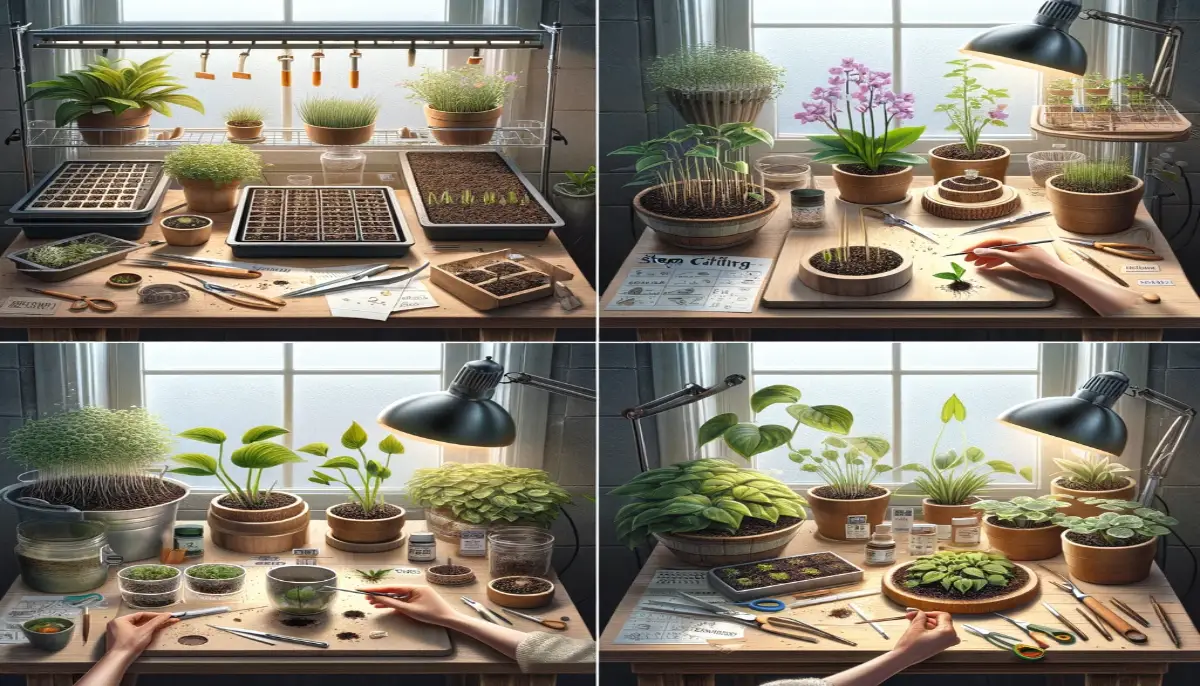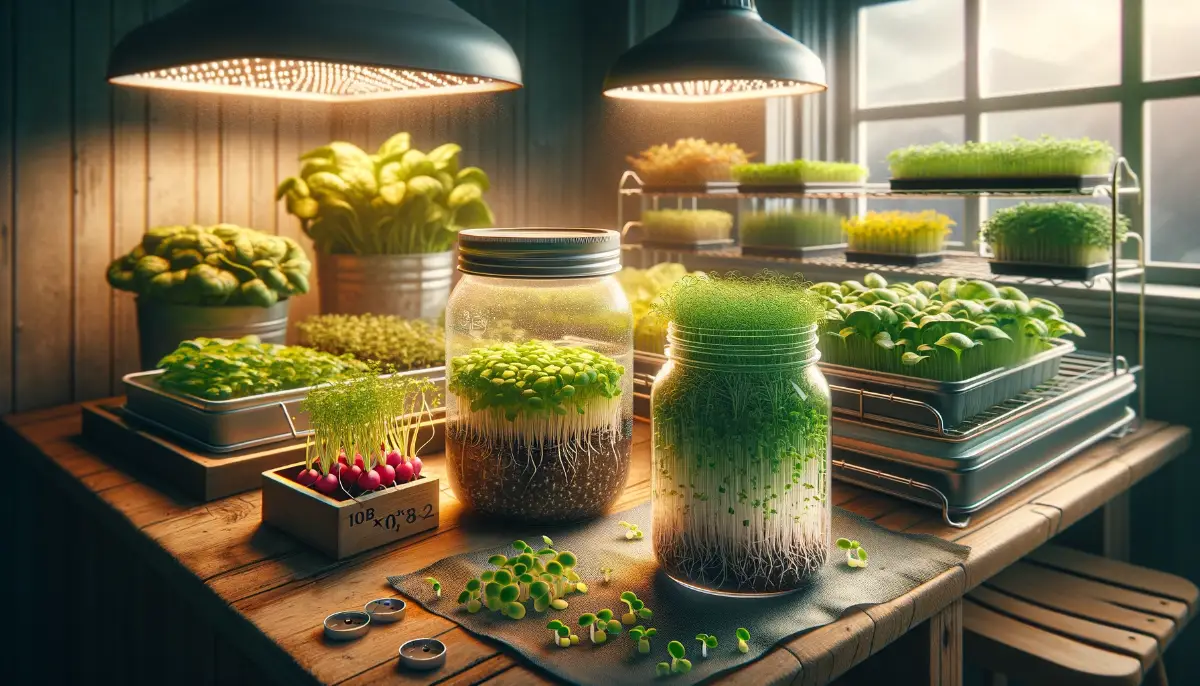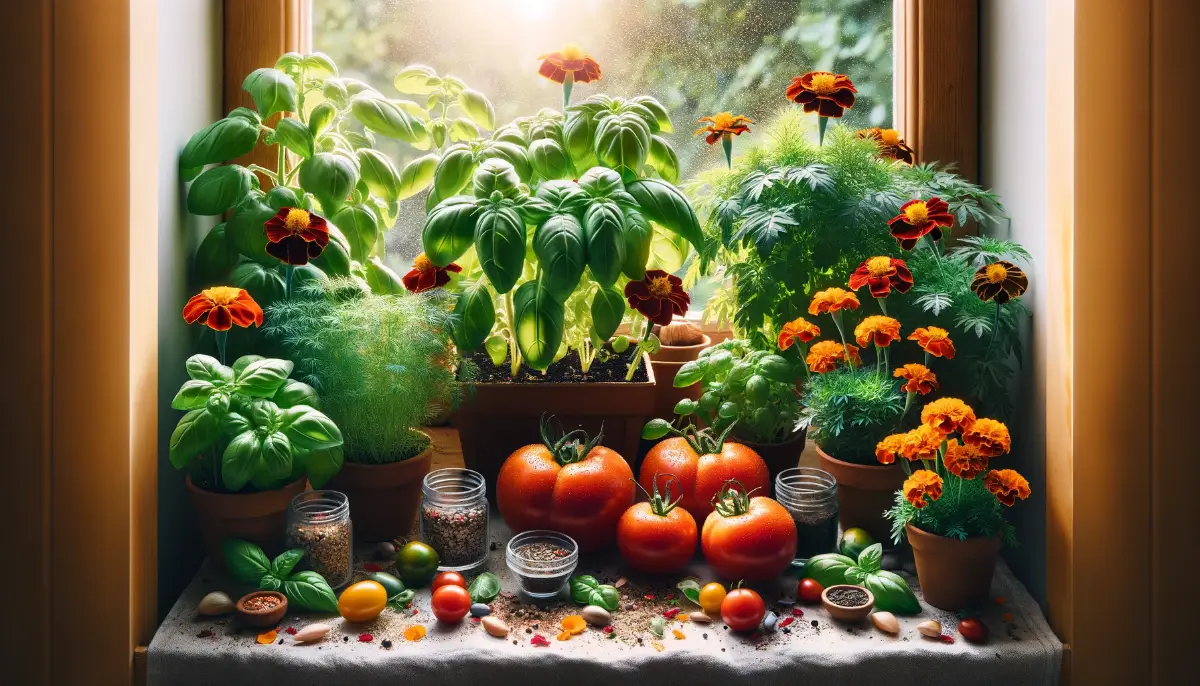Plant propagation, the art of creating new plants from existing ones, offers a universe of possibilities for indoor garden enthusiasts. Whether you’re looking to expand your indoor garden without the extra cost or simply enjoy the process of watching new life grow, mastering plant propagation is a rewarding endeavor.
With various techniques available, from seed propagation to leaf cuttings, there’s a method suitable for nearly every indoor plant species.
- Discover the joy and cost-effectiveness of propagating your own indoor plants.
- Explore different propagation methods tailored for indoor environments, including seed sowing, stem cuttings, and more.
Understanding the Basics of Plant Propagation
Plant propagation is a fundamental gardening skill, allowing gardeners to replicate their favorite plants. It can be achieved through sexual reproduction, involving seeds, or asexual reproduction, which uses parts of the plant itself.
This guide focuses on asexual methods, perfect for indoor plants, offering a quicker and more controlled growth process.
Ideal Conditions for Propagating Indoor Plants
Successful plant propagation starts with the right environment. Light, air, and water play crucial roles. Grow lights can provide the necessary light spectrum for seedlings and cuttings, promoting photosynthesis without excessive water loss.
The choice of growing medium—whether soil, perlite, or peat moss—ensures your new plants have the air and moisture they need to thrive.
Propagation Techniques for Indoor Plants
- Indoor Seed Propagation: Starting plants from seeds can be exciting, especially for edible herbs and ornamentals. Use seed-starting trays with proper drainage and keep them in a warm, well-lit area to encourage germination.
- Stem Tip Cuttings: This popular method works well for a variety of plants. Cut a healthy stem section, dip it in rooting hormone, and plant it in your chosen medium. Keep it under indirect light and maintain the soil’s moisture.
- Leaf Cuttings: For plants like African violets and succulents, leaf cuttings can produce new plants. Simply cut a healthy leaf and insert it into moist soil or water until roots develop.
- Separation and Division: Detaching and replanting baby plants, or “pups,” from the mother plant is an easy way to propagate species like spider plants and succulents. This method ensures genetically identical clones.
Here’s a simplified table showcasing some of the most common indoor plants and their recommended methods of propagation.
| Common Indoor Plant | Method of Propagation |
| Pothos (Epipremnum aureum) | Stem Cuttings in water or soil |
| Spider Plant (Chlorophytum comosum) | Offsets (baby plants) |
| Snake Plant (Sansevieria trifasciata) | Leaf Cuttings in soil, Division |
| Monstera Deliciosa | Stem Cuttings in water or soil |
| Peace Lily (Spathiphyllum) | Division |
| ZZ Plant (Zamioculcas zamiifolia) | Leaf Cuttings in soil, Division |
| Succulents (Various Species) | Leaf Cuttings, Stem Cuttings, Offsets |
| African Violets (Saintpaulia) | Leaf Cuttings in soil |
| Philodendron (Various Species) | Stem Cuttings in water or soil |
| Rubber Plant (Ficus elastica) | Stem Cuttings in water or soil |
Plants to Experiment With in Propagation
Pothos, spider plants, and succulents are among the easiest to propagate, making them excellent choices for beginners. Their resilience and minimal care requirements offer a great start to your propagation journey.
Transplanting and Aftercare
Once your plants have rooted, it’s time to transplant them into larger pots. Choose a pot that’s slightly bigger than the root ball, and be sure to use a nutrient-rich soil mix. Water the plants well and place them in a spot with adequate light.
FAQs About Plant Propagation
What are the most common mistakes to avoid in plant propagation?
One of the biggest mistakes is not using a sharp, clean tool for cuttings, which can damage the parent plant and the cutting. Another common mistake is either overwatering or underwatering the propagules, which can lead to root rot or drying out.
Can I use tap water for water propagation?
While tap water is generally safe for most houseplants, some plants may be sensitive to chlorine or fluoride commonly found in tap water. If your tap water is heavily treated, consider letting it sit out overnight before using it for propagation, or use rainwater or distilled water.
Why are my propagated plants not growing roots?
Lack of roots can be due to several factors, including incorrect temperature, insufficient light, or the cutting being too large or small. Ensure you’re following the specific requirements for the type of plant you’re propagating.
How do I know when to transplant my propagated plants into soil?
When roots are a few inches long or a dense root ball has formed, it’s time to transplant into soil. This provides the nutrients needed for continued growth, which water alone cannot supply.
Can I propagate any part of a plant?
Not all plant parts are suitable for propagation. Generally, healthy, non-flowering stems or mature leaves are best. The specific part used for propagation depends on the plant species and the method you’re using.
Is it better to propagate in water or soil?
This depends on the plant and your preference. Water propagation allows you to see root development, but transitioning to soil can be tricky. Soil propagation skips this step, but you won’t be able to monitor root growth as easily.
Do all plants propagate at the same rate?
No, propagation speed varies widely between species. Some plants, like willow or pothos, root quickly, while others, like certain succulents, take much longer.
How can I increase the success rate of my propagation?
Using a rooting hormone can help increase the chances of successful root development. Additionally, maintaining the optimal environment—correct light, temperature, and humidity levels—is crucial.
What should I do if my propagated cuttings start to rot?
If rot begins to set in, it’s often a sign of overwatering or poor air circulation. Trim away the rotten part of the cutting, adjust your watering routine, and improve air flow around the cuttings.
Can I propagate plants in any season?
While you can propagate plants year-round indoors, success rates may vary with the seasons due to changes in natural light and indoor heating or cooling, which can affect temperature and humidity levels.









